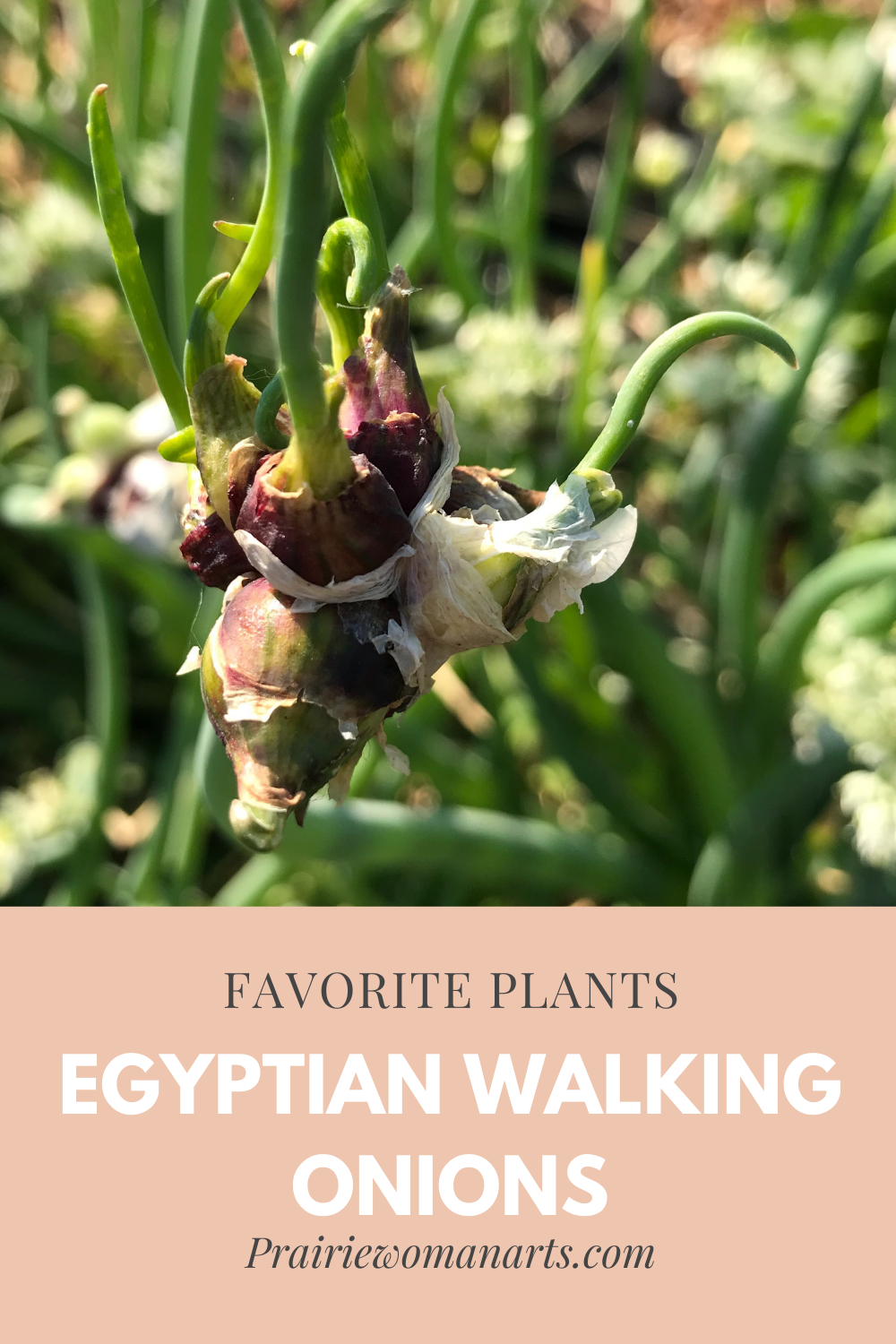Egyptian Walking Onions - Perennial onions for vegetable and flower bed
/What are Egyptian walking onions?
Egyptian walking onions are perennial onions
…meaning they come up year after year in the same spot, as long as you don’t dig the whole clump. They taste much like shallots, although slightly more pungent. When they come up in the spring in Nebraska, they look like green onions or scallions. They make new plants at the top of the stalks early in the summer. Once the green stalks reach mature height, or the weather prompts, they bloom and create the sets, or the miniature onion, at the top of the stalks. When these sets get too top-heavy, the stalks fall over, creating new roots and a new plant where the bulbs touch the ground. So, it appears to walk across the garden, in slow motion.
If you like a more scientific classification, this unusual perennial onion, Allium x proliferum (formerly classified as Allium cepa var. viviparum, bulbiferum or proliferum) is a cross between Allium cepa, the onion you have in your crisper drawer, and Allium fistulosum, the Welsh onion.
Is it edible?
Yes! Every part of this onion is edible. The early spring growth can be used as green onions. You can dig up a whole clump and use the bigger white parts just like you would an onion. I like to stuff them in the cavity of a chicken when I roast it. Egyptian walking onions do tend to have a little more bite than a regular onion, so except for the early greens, I generally don’t use them raw.
But, I must confess, for the most part, I keep them around because I love how they look, how easily they grow, and for companion planting in my vegetable and flower gardens. Onions in a flower garden? They create such a unique color and modern art look in a flower garden.
While they propagate easily, they are not invasive.
Once you dig up a clump, it’s gone. It won’t grow again. If you trim off some of the green, like scallions, they will keep grow from that root. You can also eat the itty bitty sets that grow on top, if you like peeling. I tried pickling them once, but it was too labor intensive for the result. I have thrown them into a jar of pickled green beans, however, unpeeled, for flavor and looks.
Try them! Or if you are in the neighborhood, stop by in the summer and I’ll share some sets with you. All you have to do is either plant part of a clump or shove a few sets into the soil and you’ll have your own perennial onions to enjoy for years to come.




